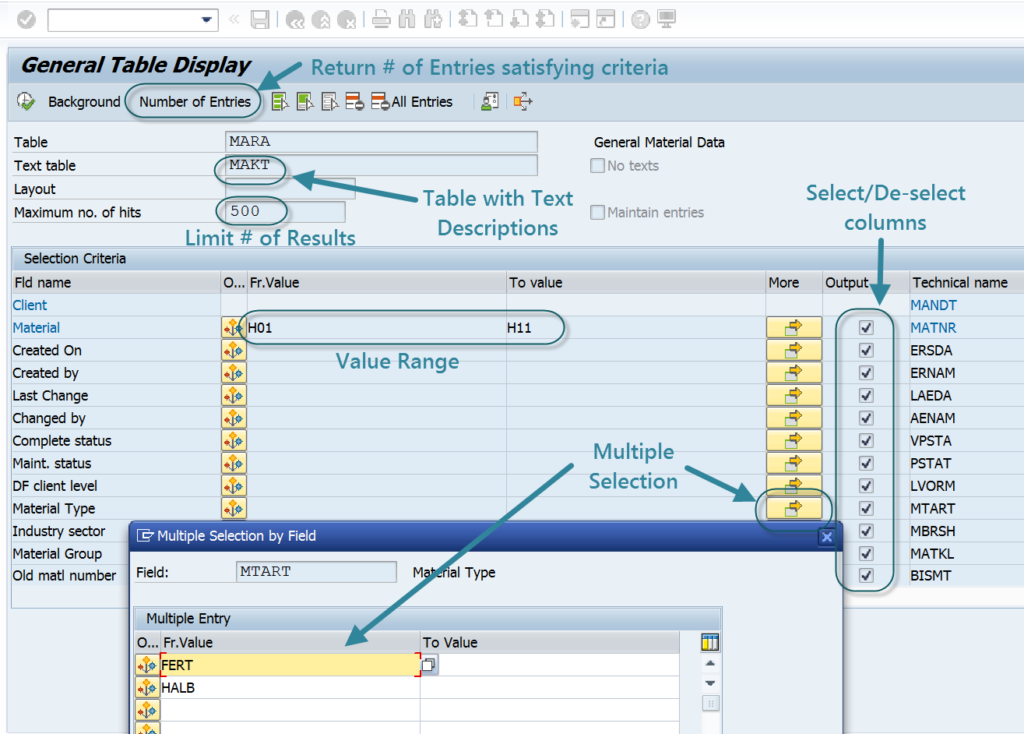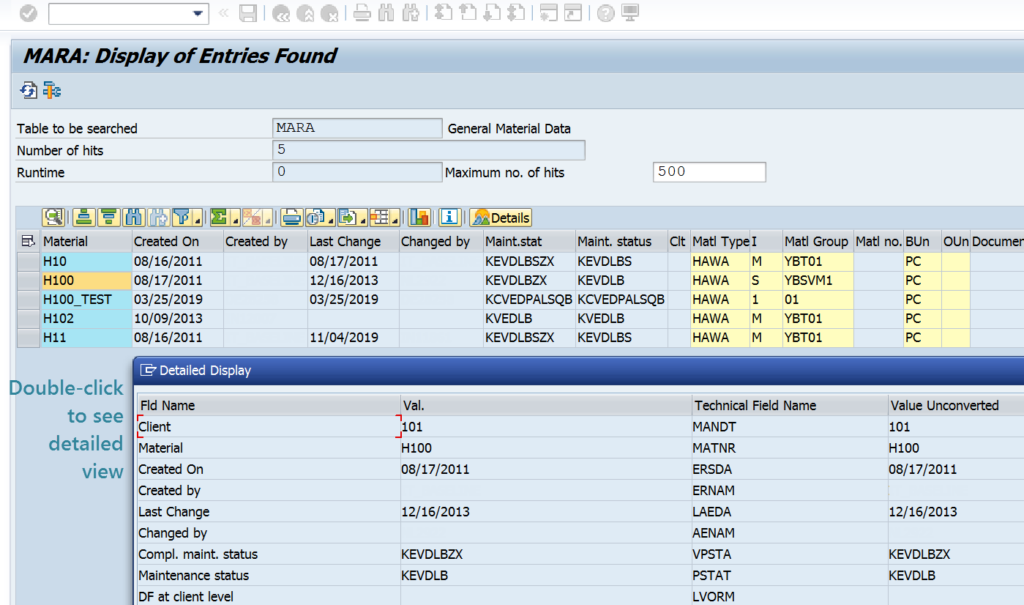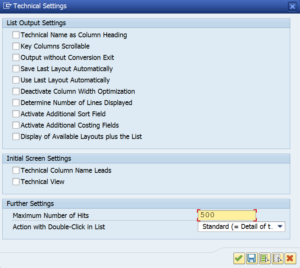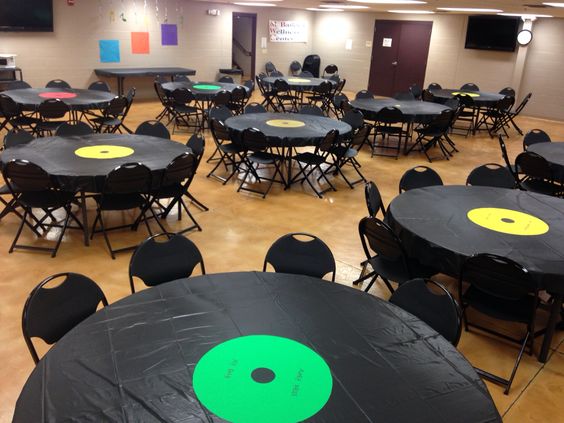For consultants and power users, viewing SAP table contents is a necessity. I use the SAP SE16n table display transactions daily to sift through records while analyzing data issues, finding example records, or simply finding that Sales Order I created months ago in a client system. I nearly always rely on SAP’s SE16n transaction for these activities for a variety of reasons, but during a recent client meeting, I learned that there appears to be some hold-outs who still use the older SE16 transaction. If you choose not to use SE16n, or are simply not aware of its capabilities, read on for my top 6 reasons to become an SAP SE16n Table Display fanatic.
…ok, so ‘fanatic’ probably isn’t the right word, but there is a lot that SE16n does offer. If you need some convincing to check out SE16n, here are my…
Top reasons for making SE16n your go-to table display tool:
- Quickly switch between tables without leaving the screen
- See both the Field Name and the Field description on the main screen
- Quickly choose results fields with a click of a button
- Tweak report output options with built-in Settings
- ALV Formatting on the Results Screen
- Activate the ‘Technical View’ to see technical field details.
When you’re done honing your SE16N skills, head on over to my SAP SD Reference Guide on key SD Tables.
How to use SAP SE16n Table Display like a pro
Let’s break down the transaction to the two main screens:
The initial Selection screen

When you first fire up SE16n, the first thing you’ll want to do is input or select your table and hit ‘Enter’. The lower half of the screen (Selection Criteria) then presents all the table fields in one giant list:
- Field Name – This column contains the text description of the field.
- From and To range selection – You can input a single value in the “From” column, or also include the “To” value to select a range of records.
- Multiple selection button – This allows you to specify multiple single values. Importantly, this also includes an ‘Upload from clipboard’ option.
- Output column – Place a checkbox here to include that field as a column on the results screen. By default, all fields are active, but you can use the Deselect All option to clear out all fields and only select the ones you wish to see.
- Technical field name – This is the technical name of the field used by the database, queries, ABAP code, etc.
The real power here is to quickly and easily select the desired scope of columns and quick access to maintaining the selection criteria.
PRO TIP: You can use the Ctrl-F key combination to do a text search for field descriptions or technical field names to quickly find what you’re looking for.
You will also see the ‘Maximum no. of hits’ field. This limits the number of records displayed on the results screen for performance reasons. Typically, this defaults to 500 records, but you can change the value of this field (or remove it altogether) to show more results. You will also see a Layout field which you can use to specify a pre-defined layout on your results screen.
SE16n can also conveniently bring in a related text description from a related text table. For example, when you specify table MARA (Material Basic Data), SAP will automatically present the text table MAKT in the ‘Text table’ field and the related text fields will be appended to the bottom of the list. If you execute the transaction, the material descriptions will be brought into the results screen, which is handy. If, for some strange reason, you do not wish to see the texts in the results, you can select the ‘No texts’ checkbox on the initial screen.
The results screen

Unlike SE16, the report results is presented using the ALV format. This means you get all the sorting, filtering, exporting, and layout options you’re accustomed to on other ALV reports.
The top of the screen also presents the current number of records in your results screen. Please note, though, that this will be limited to the ‘Max Number of Hits’ value from the prior screen. You can quickly change the Max Number of Hits at the top of the results screen and click ‘Refresh’ to expand or shrink your data set.
Double-clicking on the record will bring up the ‘Detailed Display’ pop-up window which gives you the field Field Name, value, and Technical field name for all the record’s fields.
For any SQL nerds out there, you can also see the corresponding SQL query by clicking the ‘Display Selection Criteria’ button (Hammer and Wrench icon).
Customize Your SE16n Experience using Personalized Settings

From the initial screen, you can select the ‘Change Settings’ option. A pop-up window presents some advanced options to tailor your SE16n functionality. Here’s a quick rundown of these settings:
- Technical Name as Column Heading – When active, the column headings of the results screen will contain the technical field name.
- Key Columns Scrollable – By default, the key columns in the results screen are frozen against the left side of the screen and are always visible when scrolling to the right. This option removes that “freeze”.
-

SE16n: Settings Screen
Output Without Conversion Exit – By default, SAP will perform some small ‘conversions’ before presenting the data. For example, leading zeros may be removed, or user language may be considered for some values. Selecting this option will prevent such conversions from being performed. - Save Last Layout Automatically
- Use Last Layout Automatically
- Deactivate Column Width Optimization – By default, the results screen will automatically adjust column size to display data efficiently. This setting disables this feature.
- Determine Number of Lines Displayed – While I’m not 100% sure what this does, it appears to dynamically determine the maximum possible number of table entries and place it in the ‘Max. no of hits’ field.
- Activate Additional Sort Field – This one is pretty interesting. Activating this field appends a new column on the results screen called “Sort”. The user can then manually, temporarily add values to records. This column can then be used as an ALV sort and filtering criterion. I’ve never used this, but could maybe see how this could come in handy.
- Activate Additional Costing Fields
…and there are additional settings which I have not dug into yet.
Is there any reason to use SE16 at all?
I do still use the old SE16 occasionally. There is one use case that I have difficulty with in SE16n. I find it difficult to exclude a list of single values. For example, lets say you wish to find SD document types in use that are NOT ‘OR’, ‘CR’, and ‘DR’. SE16 has a handy ‘Exclude Single Values’ list that can be used for this purpose and I am unable to find an easy alternative in SE16n. If you know of one, please let me know in the comments.
Wrap-up
There you have it: SE16n offers superior functionality and flexibility in an easier-to-use package. Are you still using SE16, or find SE16n to be lacking in certain areas? Let me know in the comments below. Thanks for reading.










HI Michael this is a great article. I think I do not have the SAP GUI version you are in. I am struggling to trying to see the rest of the fields in the selection criteria area, I only see 3 fields, had to scroll back and forth to see the rest of the fields, it is really very difficult to work with this view. Not sure if you know what technical setting is necessary to see all the fields.If you do that would be awesome!
I can send you an screen shot so you can see what I am referring to.
Thank You
Can you share your SAP and SAP GUI versions? Thanks for the comment! -Michael
I think I do not have the SAP GUI version you are in. I am struggling to trying to see the rest of the fields in the selection criteria area, I only see 6 fields but want more to see, had to scroll back and forth to see the rest of the fields, it is really very difficult to work with this view. I am in SAP GUI 740 .Not sure if you know what technical setting is necessary to see all the fields.If you do that would be awesome!
Peter, which table are you looking at? You will typically need to do some scrolling to see.all the fields in a table. I’m unaware of any technical setting for this.
Hi Martino,
How did you solve this problem. I am also facing the same.
Thanks!
For example, lets say you wish to find SD document types in use that are NOT ‘OR’, ‘CR’, and ‘DR’. SE16 has a handy ‘Exclude Single Values’ list that can be used for this purpose and I am unable to find an easy alternative in SE16n.
You have to use the Options parameters. On the option line field of “SD document type ” use the condition as follow : NOT LIKE ‘%OR%’ AND NOT LIKE ‘%CR%’ AND NOT LIKE ‘%DR%’
Thanks for the tip. I’ll need to try that out.
Is SE16/SE16N ready-only. We want to use it to extract data only but IT say it is a security risk as could be used to modify tables/data. I would ahve thought security would control that if it was possible.
Hi, Gavin. Thanks for commenting. Yes, SE16N can be used to make table updates. In most systems I come across this function seems to be disabled, bit there are ways around the restriction with some basic debugging. Some companies create a copy of SE16N with some additional safeguards preventing any updates at all and release it for basic user consumption.
RK_SE16D is the equivalent alternative out of the security radar
Thanks so much fornthe comment. I’ll give that a shot.
Hi !
To exclude single values in SE16N, just first click on the “Option” column next to the field to exclude in the selection screen. Then select the Red “=” and only then click on the “More” column. This way all lines have the exclusion, you can then use the button “Multiple selection” to select all the values you want to exclude.
But I agree, it’s really not as user friendly as the regular exclude single values in regular selection screens…
Very useful info Micheal.
question- How can you use SE16N for vendir master data?I mean what fields or data can we pull from this code?
Hello, Sunil. Just about any table — including vendor master data — can be displayed using SE16N. Start with table LFA1 which is the general vendor master data table, but there are others you may need. I don’t have many resources yet for the MM module, but you can look here for some more.
Is there a table for displaying purchase price revisions in open purchase order along with validity periods
Thank you for your question. Unfortunately, I’m unaware of such a table. With pricing conditions, you may need to dig into the individual change records in order to build a history. Wish I could be more help.
Hi
Thank you for your support .i found another report for extracting price revisions.
Also i have an other question – Is there a report or table for extracting PO header texts
Try using the ‘More’ button which allows you to enter ‘OR’ logic.
Thanks for the comment, Denise. Which button is the More button? Are you able to elaborate a bit?
In order to see the More button you need to set Technical View in your user settings in SE16N.
Hey Michael,
How do I save a variant with dynamic values (like first day of the month to current day) like I can do with SE16? SE16 opens the Variant Attribute when saving, but I don’t see that in SE16N. How can I get dynamic attributes for SE16N?
Thanks for the question, Jeff. I’ve never tried this, to be honest. It looks like SE16n does not have the typical selection screen which can be used for the dynamic options on the variant. It does look like SE16 has this capability: you can hit the Save button on the initial screen and access those dynamic fields. Looks like you’re stuck with SE16 for that requirement.
Hi Michael good article,
Question how can I find the names of tables or related information with SAP? If I want to find all invoices and bill docs related to a contract ID along with the bill period start and end dates. Those would all be separate info right? So i need to be able to find the separate table names to search what I need in SAP.
Hello, Nathan, and thanks for the question. You’re right: different types of SAP data are stored in separate tables. A significant breadth of my SAP understanding is knowing these tables and how they interrelate. The first step is finding the tables. To do this, you can press F1 in any SAP field and click the hammer and wrench button to see its technical details including the table and field name. You can then plug that table into SE16n and query its contents. If you find yourself needing data from multiple tables, then you have a couple of options:
(1) you can simply do several extracts from SE16n and export them to Excel. A VLOOKUP can help you bring data together. This is ideal for quick queries.
(2) If you need something more repeatable, you can use T-code SQVI which allows you to create a multi-table query. This takes some time to learn, however.
(3) You can always work with a developer to make a custom report
Hope this helps.
Hi Michael
Facing an issue where I can only get 779,625 records in se16n whereas entries found are 2,800,000
Cannot download in background as well
Is there any restriction on se16n extraxt?
Hello, Praveen. I’m curious about which table you are trying to query. Is it a standard table or custom? Also, what makes you say that there are 2.8M records instead of 780k? It’s possible that there is an index table that is out of sync or something. Please let me know.